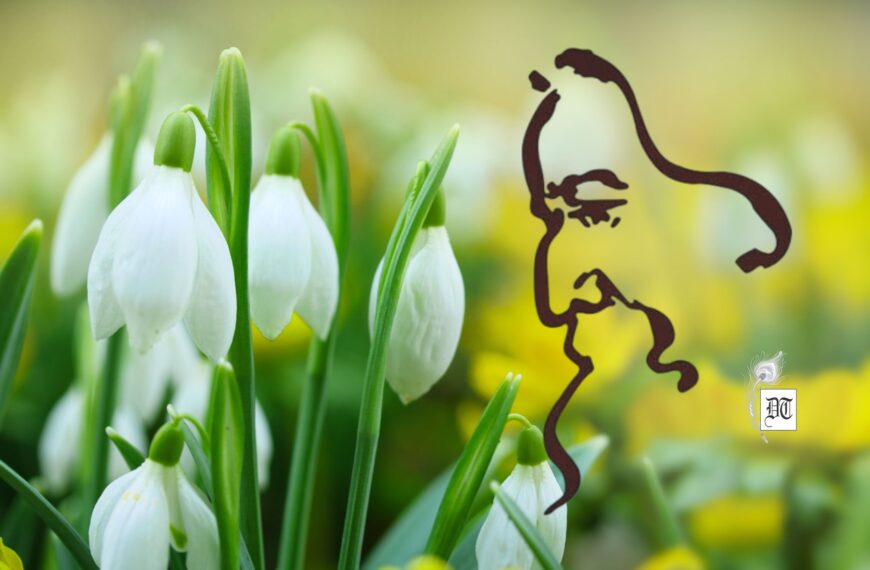In this part of Art Thought, Arindam seeks to differentiate art and artlessness. He quotes Ananda Kentish Coomaraswamy, who shows how a mathematician sees beauty in a ‘beautiful equation’. In the second part of this discourse, this scribe examines the relationship between ‘idea’ and ‘form’, taking cue from Tagore.
“It is with perfect right that the mathematician speaks of a ‘beautiful equation’ and feels for it what we feel about ‘art’. The beauty of the admirable equation is the attractive aspect of its simplicity. It is a single form that is the form of many different things. In the same way beauty absolutely is the equation that is the single form of all things, which are themselves beautiful to the extent that they participate in the simplicity of their source.” ~ Ananda Kentish Coomaraswamy
It is not likely that a person who entertains even a modest prejudice against the kind of distinction between the contemporaneity and the historicity of art would have easily changed his mind by apologetics alone. Individual talent can prosper only in tradition. Continuity and intelligibility is the very basic premise for any serious work of art to flower.
The history of art is the history of ideas or the history of one kind of thinking about values. And history could not have been relativistic, indifferent, or at random. It contains praise and blame, both implicit and explicit, thereby tending to be argumentative, persuasive and propagandist in approach and content. However, this is not without merits of its own. It would of course be too simplistic to denounce the historical or the argumentative approach to art, and chuck it over the left shoulder.
The process of selection has inbuilt within it the process of rejection.
I do not intend to value-judge any art. I am not competent to do so. The process of selection has inbuilt within it the process of rejection. By knowing what we do not want to do, we know what we wish to do. It sharpens our aims and objectives. The contemporaneity of art rebuilds our faith in the continuum of aesthetics. It is not a thing of the past, dead and buried with our forefathers.
“Idea seeks its body in form, /Form its freedom in idea.” ~ Rabindranath Tagore
These lines from Tagore are as cryptic as sutra. I attempt to see art in this light alone. Form is not the mere external appearance or its resemblance and likeness to the placement of basic elements, as lines and colours in a painting, or volumes and voids in a sculpture. Form in fact transcends the sheer physical feature to the expression and effect inherent in it. It is the totality of the placement, organisation and relationship of the pattern projected and expressed within. This is possible only when ‘idea’ is assimilated in the ‘form’. The exact reproduction of the outline, the physical feature, is no doubt the work of a skilled draughtsman, but surely it is no work of art. Art is inspired expression in accordance with the aesthetic principles.
The choice of material for a given ‘form’ is influenced by the ‘idea’, which seeks expression in that form. ‘Form’ itself is untarnished by the material used; however, the material has to be functional to the ‘form’.
The difference between beauty and utility is unreal.
Thus, there cannot be a better sword of gold than a sword of steel. Material by itself is formless. Therefore, it is relatively ugly. Further, it would be meaningless to make swords of gold, if swords are to be used as swords.
The difference between beauty and utility is unreal. Both are inter-related. There is no beauty without utility. For neither beauty nor art can be meaningless. Pretentious and affected display of art can at best be arty. Not art. Thomas Mann rightly says “…a future is coming in which we shall condemn as black magic, as the brainless, irresponsible product of instinct, all art which is not controlled by the intellect.”
This precisely is the difference between art and artlessness.
Picture design Anumita Roy, Different Truths
Also see: https://www.differenttruths.com/arts/art-and-artiste/





 By
By


 By
By
You have bored down to the heart of it. Our search for meaning and need to communicate what we find endlessly feeds the imagination. Even the most abstract of images in art may speak to this hunger as well as stark realism – as you say it is the idea that brings life to the form.
very much and thoroughly enjoyed reading it
Thanks a lot for your encouragement, Sukanya.